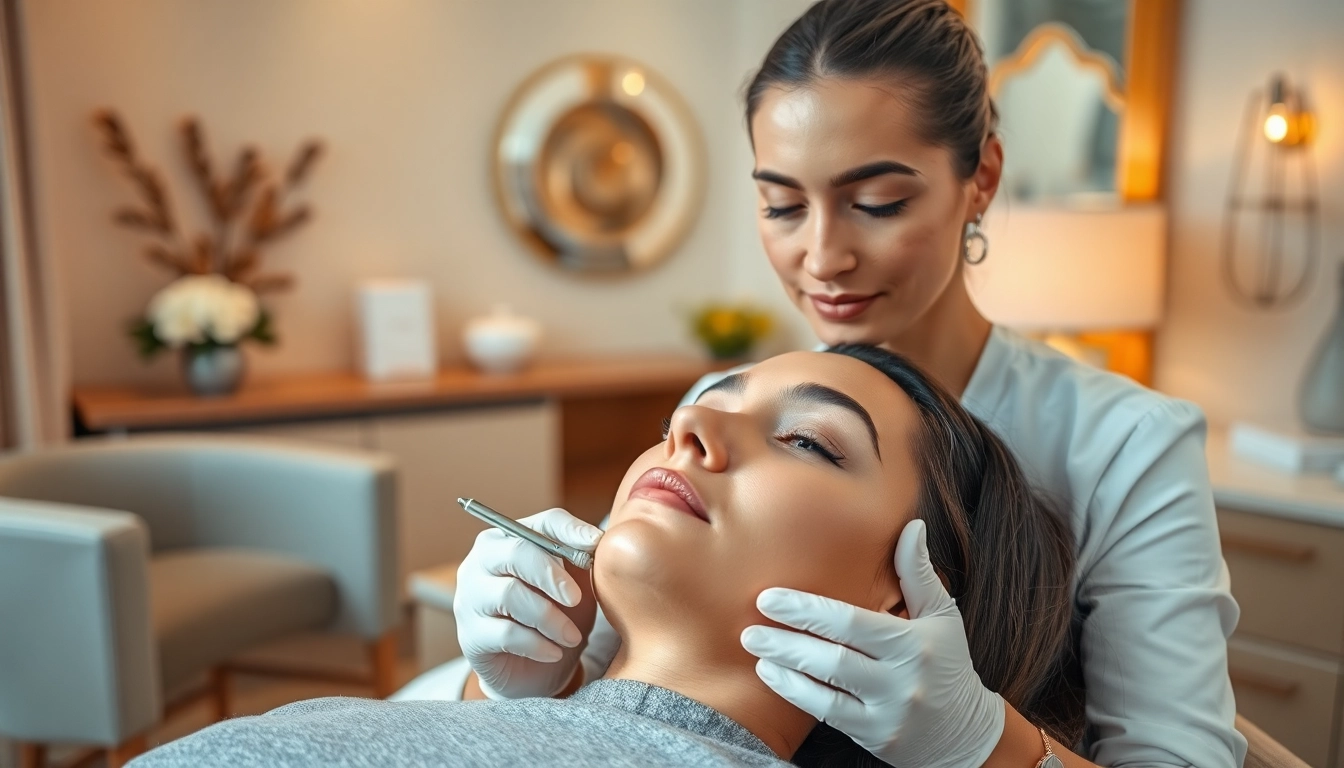
What is Testosterone Replacement Therapy?
Definition and Purpose of Testosterone Replacement Therapy
Testosterone Replacement Therapy (TRT) is a medical treatment designed to restore testosterone levels in men who experience symptoms due to low testosterone, commonly known as low-T. As men age, testosterone levels naturally decline, which can lead to a variety of symptoms including reduced energy, decreased libido, and diminished muscle mass. TRT aims to alleviate these symptoms and improve quality of life for those affected. By replenishing testosterone levels, many patients report improvements in mood, energy, and sexual function. Understanding the nuances of TRT is vital for anyone considering this treatment as part of their healthcare journey.
Common Forms of Testosterone Replacement Therapy
Testosterone Replacement Therapy is administered through several methods, each with its benefits and considerations. The most common forms include:
- Injections: Administered typically every one to two weeks, testosterone injections can provide immediate and effective relief from low-T symptoms.
- Patches: These are topical patches applied to the skin that release testosterone over 24 hours. They offer a consistent dosage and are relatively easy to use.
- Gels: Testosterone gels are absorbed through the skin when applied daily. They provide flexibility and control over dosage but require caution to avoid transferring the hormone to others.
- Pellets: Implanted under the skin, testosterone pellets release a steady dose of testosterone and can last several months before needing replacement.
Each method has its unique advantages, and the choice often depends on patient preference, lifestyle, and medical recommendations.
Who is a Candidate for Testosterone Replacement Therapy?
Candidates for Testosterone Replacement Therapy typically include men who are diagnosed with low testosterone due to conditions like hypogonadism. Symptoms signaling the need for TRT can include:
- Low energy and fatigue
- Decreased libido and sexual dysfunction
- Loss of muscle mass
- Increased body fat
- Depression or mood changes
A thorough evaluation by a healthcare provider is essential to determine if TRT is appropriate, which typically includes blood tests to measure testosterone levels, overall health assessments, and consideration of medical history and symptoms. If you think you might be a candidate for Testosterone Replacement Therapy, seeking out professional guidance is an important step.
Benefits of Testosterone Replacement Therapy
Improved Mood and Energy Levels
One of the notable benefits of Testosterone Replacement Therapy is its substantial impact on mood and energy. Many men report feeling more energized, motivated, and generally happier after starting treatment. The relationship between testosterone levels and mental well-being is significant, as low testosterone is often linked to symptoms of depression and anxiety. By restoring hormone levels, patients may experience a marked improvement in emotional health and overall life satisfaction.
Enhanced Sexual Function and Libido
Low testosterone can severely impact sexual health, leading to issues such as reduced libido, erectile dysfunction, and decreased sexual satisfaction. Testosterone Replacement Therapy can help restore sexual function, enhance libido, and contribute to a healthier sex life. Studies have indicated that men undergoing TRT frequently report increased sexual desire and improved erectile function, which can positively affect intimacy and relationships.
Increased Muscle Mass and Strength
Testosterone plays a crucial role in muscle development and overall strength. Men undergoing TRT often notice an increase in muscle mass and strength, facilitated by the enhanced ability to engage in physical activities and resistance training. This increase not only improves physical appearance but also supports metabolic health and reduces risks associated with obesity and cardiovascular conditions.
Risks and Side Effects of Testosterone Replacement Therapy
Potential Health Risks
While Testosterone Replacement Therapy offers numerous benefits, potential risks and side effects must be acknowledged. Some of the health risks associated with TRT include:
- Blood clots or deep vein thrombosis
- Increased risk of cardiovascular issues in certain populations
- Possible aggravation of sleep apnea
- Skin reactions at the injection or application site
It’s crucial for practitioners to balance the potential advantages against these risks, considering factors such as age, medical history, and existing health conditions when prescribing TRT.
Common Side Effects
Just as with any medical treatment, side effects can occur with Testosterone Replacement Therapy. Common side effects reported include:
- Acne and oily skin
- Hair loss or increased hair growth
- Fluid retention and swelling
- Changes in mood, including increased aggression in some cases
Patients are encouraged to communicate openly with their healthcare providers about any side effects they experience to manage them effectively and adjust treatment as necessary.
Managing Risks While Undergoing Treatment
Monitoring and management of risks is an essential component of Testosterone Replacement Therapy. Regular follow-up visits should include:
- Blood tests to monitor testosterone levels and overall health
- Evaluation of symptoms and side effects
- Assessing cardiovascular health and other risk factors
By maintaining an ongoing dialogue with healthcare providers and adhering to recommended testing schedules, patients can better ensure the safety and effectiveness of their therapy.
How to Start Testosterone Replacement Therapy
Consultation and Diagnosis Process
The journey toward Testosterone Replacement Therapy begins with a thorough consultation with a healthcare provider. During this initial visit, the provider will take a detailed medical history and assess symptoms. Patients should openly discuss any issues they are facing, including mood changes, libido concerns, and other related symptoms. This conversation lays the groundwork for determining whether further testing is warranted.
Tests and Evaluations Before Treatment
To confirm a diagnosis of low testosterone, several tests are typically performed, including:
- Blood tests to measure serum testosterone levels, ideally conducted in the morning when levels are usually highest.
- Evaluation of hormonal levels, including luteinizing hormone (LH) and follicle-stimulating hormone (FSH), to determine the source of low testosterone.
- Assessment for underlying conditions that may contribute to low testosterone, such as diabetes or obesity.
The results will guide the healthcare provider in determining the best course of action, including whether to initiate TRT.
Creating a Treatment Plan
If a diagnosis of low testosterone is confirmed, the next step entails developing a personalized treatment plan. This plan typically includes:
- Selection of the method of testosterone administration based on patient preference and medical history.
- Setting an appropriate dosage that addresses symptoms while minimizing the risk of side effects.
- Establishing a schedule for follow-up visits and blood tests to monitor progress and effects of therapy.
Patient education plays a significant role in the process, ensuring that patients understand how to administer treatment (if applicable) and the importance of adhering to their regimen.
Monitoring and Adjusting Testosterone Replacement Therapy
Regular Follow-ups and Testing
Once a treatment plan is in place, ongoing monitoring is vital to achieving the desired outcomes with Testosterone Replacement Therapy. Regular follow-up appointments—typically every three to six months initially—allow healthcare providers to:
- Evaluate testosterone levels and adjust dosages as necessary.
- Identify and address any side effects that may arise.
- Assess the overall efficacy of the treatment in alleviating symptoms.
These regular check-ins are crucial in ensuring the patient’s safety while maximizing the benefits of TRT.
Signs of Effective Treatment
Patients undergoing Testosterone Replacement Therapy can expect to experience various improvements as treatment progresses. Signs of effective therapy may include:
- Increased energy and reduced fatigue
- Improved mood and emotional stability
- Enhanced sexual desire and performance
- Building and maintaining muscle mass
Recognition of these positive changes can help motivate patients to adhere to their treatment plans and maintain open communication with their healthcare providers.
When to Consider Changing Treatment Strategies
In some cases, patients may find that their initial treatment plan is not delivering the expected results or that they are experiencing adverse side effects. Factors that may prompt a change in strategy include:
- Persistent symptoms of low testosterone despite adherence to treatment.
- Significant side effects that outweigh benefits.
- Changes in health status or new medical conditions that necessitate re-evaluation of treatment.
In such scenarios, healthcare providers should work collaboratively with patients to explore alternative therapies, dosage adjustments, or different administration methods that may better suit the patient’s needs.








